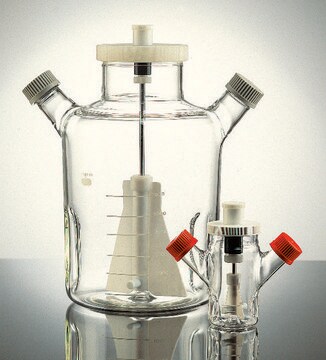07102
Hydrochloric acid
36.5-38%, meets analytical specification of Ph. Eur., BP, NF, fuming
About This Item
Recommended Products
Product Name
Hydrochloric acid, meets analytical specification of Ph. Eur., BP, NF, fuming, 36.5-38%
vapor density
1.3 (vs air)
Quality Level
vapor pressure
3.23 psi ( 21.1 °C)
7.93 psi ( 37.7 °C)
Assay
36.5-38%
form
liquid
quality
meets analytical specification of Ph. Eur., BP, NF
impurities
free bromine or chlorine, complies
residual solvents, complies
≤0.0001% free chlorine (Cl)
≤0.005% non-volatile matter
ign. residue
≤0.002% (as SO4)
color
colorless
bp
>100 °C (lit.)
density
1.070 g/cm3 at 20 °C (lit.)
anion traces
bromide (Br-): in accordance
iodide (I-): in accordance
sulfate (SO42-): ≤2 mg/kg
sulfite (SO32-): ≤5 mg/kg
cation traces
As: ≤0.5 mg/kg
Fe: ≤1 mg/kg
suitability
complies for appearance of solution
SMILES string
Cl
InChI
1S/ClH/h1H
InChI key
VEXZGXHMUGYJMC-UHFFFAOYSA-N
Looking for similar products? Visit Product Comparison Guide
Related Categories
Application
- Unlocking high-performance HCl adsorption at elevated temperatures: This research demonstrates the use of hydrochloric acid solution for synthesizing robust Ca-Mg-Al mixed oxides. These materials are crucial in environmental applications for adsorbing acidic gases, showcasing hydrochloric acid′s role in developing solutions to combat air pollution (Cao et al., 2024).
- Sustainable and Green Corrosion Inhibition of Mild Steel: Hydrochloric acid is utilized here to test new, environmentally friendly corrosion inhibitors. This is vital in industries where maintaining material integrity against chemical attack is crucial, highlighting hydrochloric acid′s role in innovative material science applications (Rizi et al., 2023).
- Synthesis of Zinc Oxide Nanorods from Zinc Borate Precursor: This study uses hydrochloric acid in the synthesis of zinc oxide nanorods, important for supercapacitor applications. It underscores the critical role of hydrochloric acid in nanomaterials research, pushing the boundaries of energy storage technology (Lefdhil et al., 2023).
- An improved digestion and analysis procedure for silicon in plant tissue: Hydrochloric acid is employed to digest plant tissues for silicon content analysis, enhancing agricultural and biological research methodologies. This application reflects the importance of hydrochloric acid in scientific studies that require precise chemical processing (Langenfeld and Bugbee, 2023).
- N-N(+) Bond-Forming Intramolecular Cyclization of O-Tosyloxy beta-Aminopropioamidoximes and Ion Exchange Reaction: In this research, hydrochloric acid plays a key role in organic synthesis, demonstrating its versatility in pharmaceutical compound development. The study provides insights into the synthesis of complex organic compounds, which are vital in medicinal chemistry (Kayukova et al., 2023).
Packaging
Other Notes
The article number 07102-6X1L will be discontinued. Please order the single bottle 07102-1L which is physically identical with the same exact specifications.
Signal Word
Danger
Hazard Statements
Precautionary Statements
Hazard Classifications
Eye Dam. 1 - Met. Corr. 1 - Skin Corr. 1B - STOT SE 3
Target Organs
Respiratory system
Storage Class Code
8B - Non-combustible corrosive hazardous materials
WGK
WGK 1
Flash Point(F)
Not applicable
Flash Point(C)
Not applicable
Choose from one of the most recent versions:
Already Own This Product?
Find documentation for the products that you have recently purchased in the Document Library.
Our team of scientists has experience in all areas of research including Life Science, Material Science, Chemical Synthesis, Chromatography, Analytical and many others.
Contact Technical Service



